
Major 7th Interval Songs
‘Take On Me’ – A Ha
“Take on Me” by A-ha is that super catchy ’80s song with the high-pitched singing you can’t help but hum along to. It’s got that synth-pop vibe and tells a story about going after love, making it a total banger that everyone knows and loves.

‘The Winner Takes it All’ – ABBA
“The Winner Takes It All” by ABBA is like a heartbreak anthem that hits you right in the feels. It’s all about the end of a relationship and how one person comes out on top while the other is left with all the pain.
As you can see from the image below, the D flat to C flat gives us an ascending major 7th. This is because C flat is the 7th note in the D flat major scale. Or C flat is 11 half-steps above D flat.

‘Don’t know Why’ Norah Jones
“Don’t Know Why” by Norah Jones is that mellow and soulful tune that just gets you in the mood for a chill evening. It’s like a cozy blanket for your ears with Norah’s smooth voice and the jazzy vibes, making you feel all warm and introspective, especially when you don’t know why you’re feeling the way you do.
The opening line ‘I waited till I saw the sun’ contains a major 7th of B flat to A natural.

What is a Major 7th Interval?
Firstly, the definition of an interval is the distance between two notes. We could play the notes at the same time, a harmonic interval, or one of the other, a melodic interval. So how can we describe the distance between two notes.

Using whole steps and half-steps (tones and semitones)
We could describe an interval in terms of the number of half-steps for the lower note to the upper note. For a major 7th we have to go up 11 half-steps or five and a half whole-steps to create the interval.
Another way to think about a Major 7th is that it is only one half step below an octave.
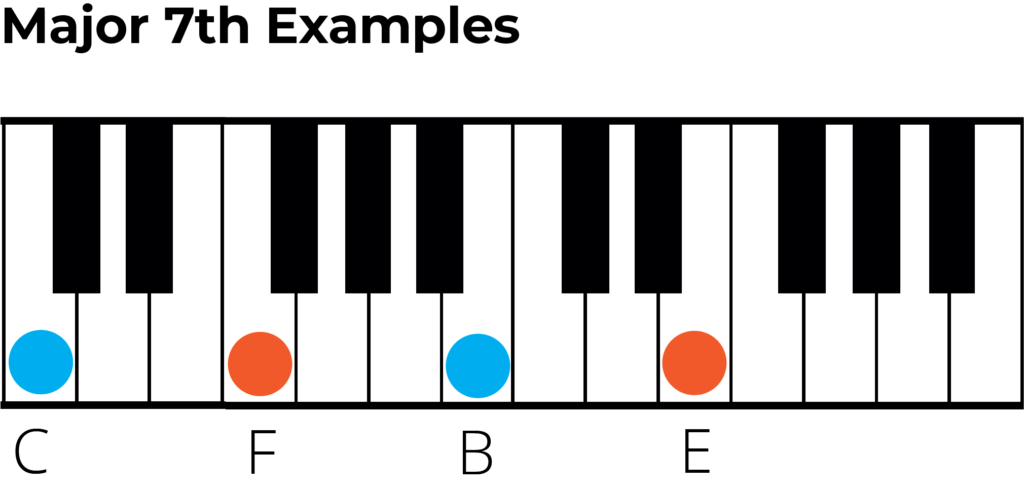
Using scales to name intervals
Simply put, scales are patterns of half-steps and whole-steps. In the major scale, the 7th degree will be 11 half-steps above the root note. This interval is therefore call a Major 7th.

Ear Training and Intervals
To develop as a musician you’ll want to be able to recognise intervals by ear. This is where ear training comes in, as the more you practice, the better your’ll get.
My recommendation for this is Tonegym as they have a comprehensive and fun program for training your ears. It’s what has gotten the best results with for my own students.
In the ‘tools’ section of their site, Tonegym even have an interval memorizer that allows you to learn every type of interval.
For an in-depth look at ear training, here’s my full review of Tonegym.
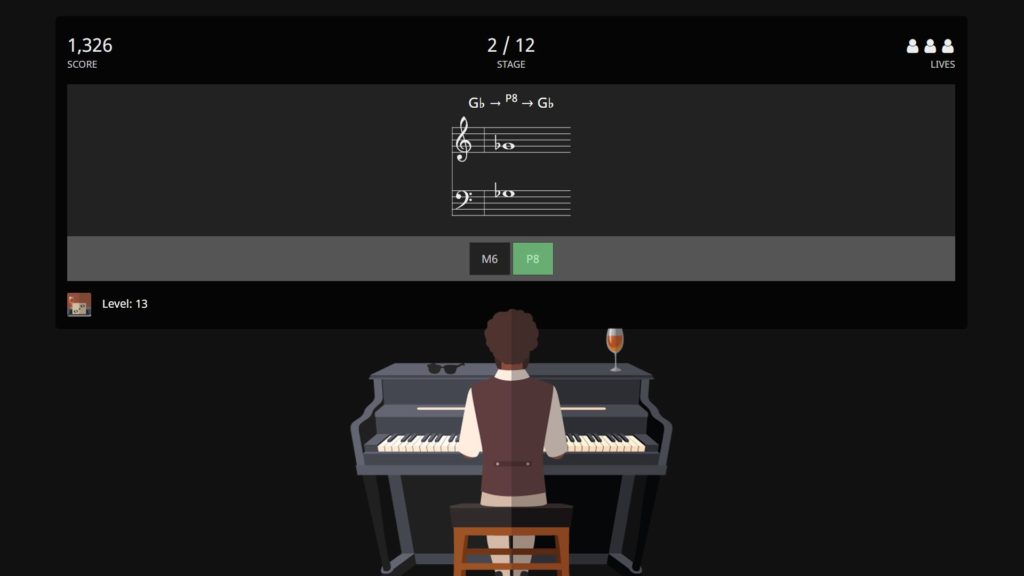
Examples of Major 7th Intervals
Here is a table which shows Major 7ths across a whole octave. Remember that to name an interval ask yourself, ‘Which degree of the lower note’s scale is the higher note?’
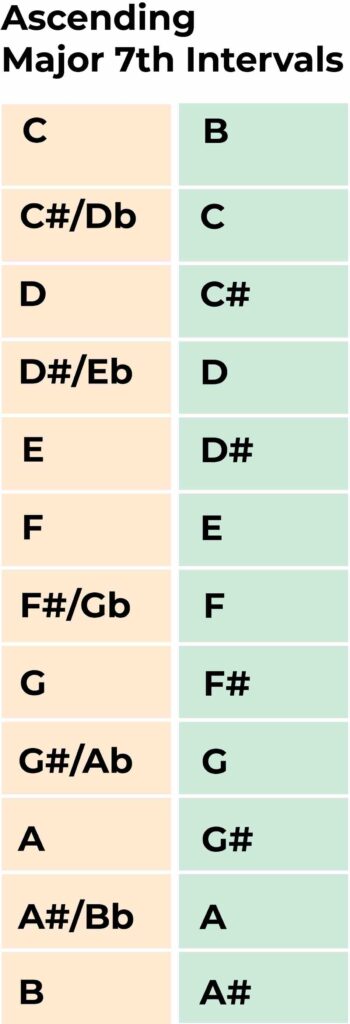
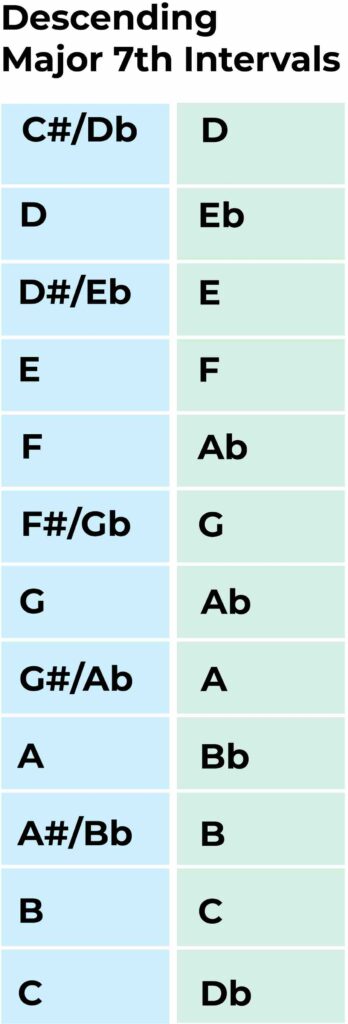
Major 7th Interval Qualities
We can describe the sound of intervals using a numbers of adjectives. An interval can sound ‘stable’ or ‘grounded’ like a perfect 5th, or it could sound ‘dissident’, ‘neutral’ or even ‘sinister’.
The interval of a major 7th can be described as a dissonant interval due to the significant distance between its two notes on the musical staff.Its dissonant quality creates a certain level of instability and unpredictability, which can elicit feelings of yearning or a sense of unresolved emotions.
When used in melodies, the major 7th interval can be employed to create a sense of tension and add an element of drama or intrigue. Its unstable nature introduces a leap that captures attention and can provide a melodic twist or surprise. The major 7th interval is often used as a passing note, leading to resolutions that bring a satisfying sense of resolution.
How to Identify Major 7th Intervals by Ear
The best way to start identifying Major 7th intervals is by listening to reference songs like the ones above. This will give you a reference point to look back at when listening to new pieces.
The solfege system can also help as ‘do-ti’ is a major 7th interval (C to B).
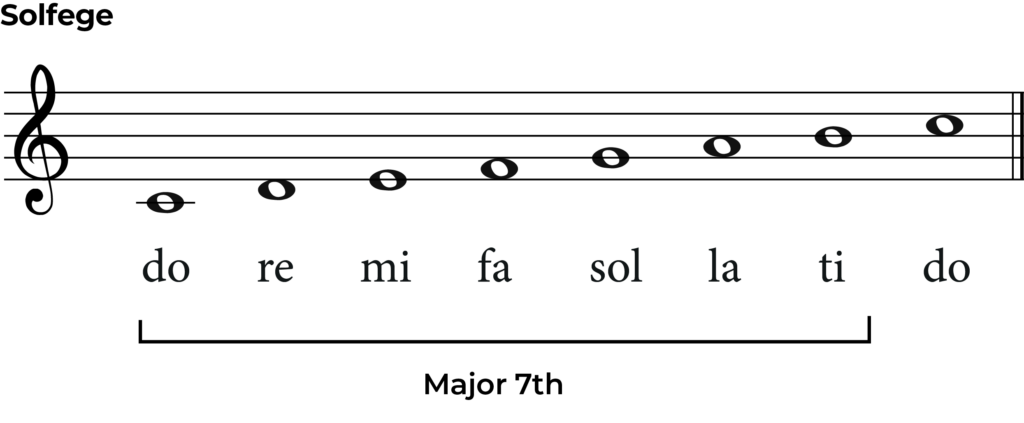
ToneGym- The Ultimate Ear Training App
ToneGym allows you to improve your ear with a range of games, interactive and competitions.
Or check out our complete review of ToneGym.

How to Play Major 7th Intervals on Your Instrument
If you are a pianist then playing a Major 7th couldn’t be easier. Moving up 11 keys (or 11 half-steps) will give you a Major 7th. Alternatively, play an octave and then lower the top note by a semitone (half-step). Check out the examples below.
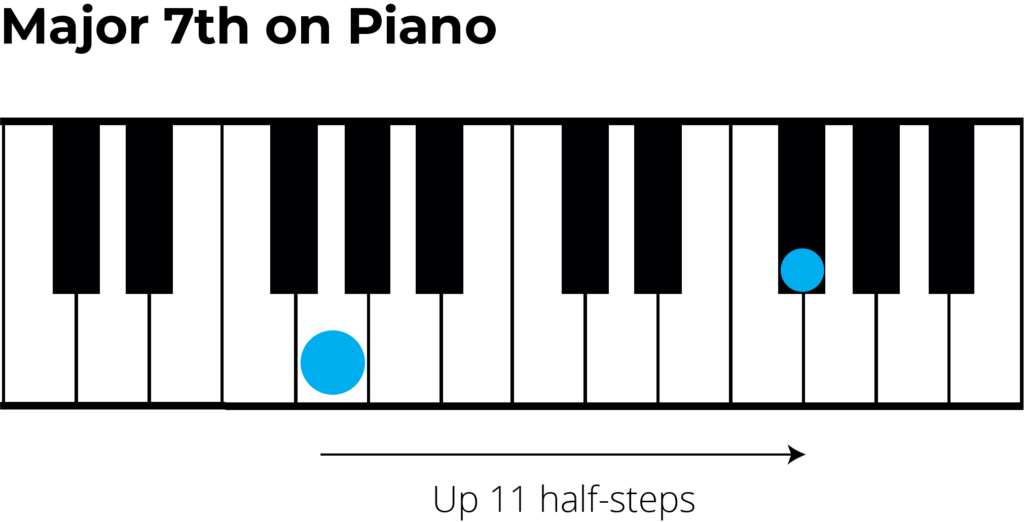
Major 7th intervals on guitar are also simply to play. The shape below can be slide up a down the neck to play major 7th intervals starting and ending in any note.

What’s next….?
- Learn about the Minor 7th intervals.
- Expand your interval knowledge with out complete guide to intervals.
